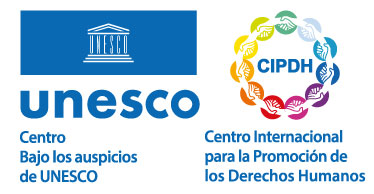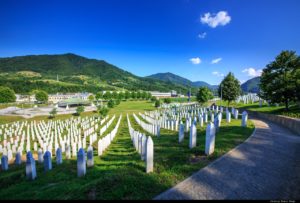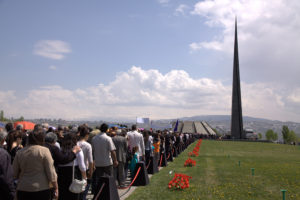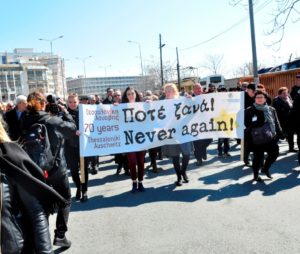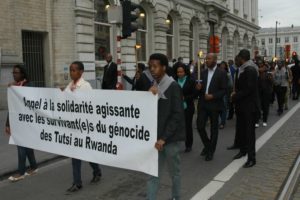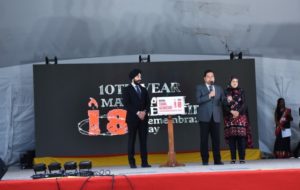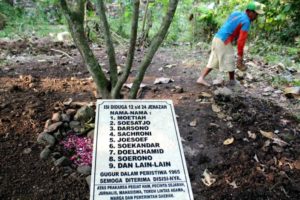Swakopmund Concentration Camp Memorial
Monument
Theme: Genocide and/or Mass Crimes

Address
Memorial Park Cemetery
Country
Namibia
City
Swakopmund
Continent
(Es) África
Theme: Genocide and/or Mass Crimes
Purpose of Memory
To remember the Herero and Namaqua victims who died in the Swakopmund concentration camp.
Known Designation
Swakopmund Concentration Camp Memorial
Date of creation / identification / declaration
2007
Public Access
Free

Location description
Every year, since 2007, at the end of March, the Swakopmund Reparation Walk is organized. Hundreds of people from the Herero and Namaqua communities participate to honor the victims of the German colonial power between 1904 and 1908 in what is now Namibia, and to demand reparation from the German state. In the context of the Walk, speeches, religious ceremonies and other cultural activities are organized. The Walk ends in front of the Swakopmund Concentration Camp Memorial.
The Memorial is a tombstone placed in the “African Cemetery” of the city of Swakopmund which, for several decades, was an informal cemetery where the victims of the concentration camp that operated in the surroundings were buried among others.
The Herero and Namaqua massacres took place in the territory of what is now Namibia, between 1904 and 1908, in the context of rebellion against the German colonial rule. 70% of the Herero and 50% of the Namaqua ethnicities (75,000 people in total) died in combat and as a consequence of hunger and lack of access to water. Most fighters who surrendered were detained in concentration camps, where they were abused, subject to slavery and, in some cases, to medical experiments. In turn, hundreds of skulls from people who died at that time were taken to Germany to perform racial scientific experiments.
After being defeated in World War I (1914-1918) Germany lost all its colonies, so the League of Nations transferred the temporary administration of Namibia to South Africa. During the South African occupation, a system of racial segregation (apartheid) was implemented, ending in 1989 with the first presidential elections.
In 1985, in its reviewed and updated Report on the issue of prevention and punishment of the crime of genocide, known as “Whitaker Report”, the United Nations Sub-Commission on the Promotion and Protection of Human Rights referred to the killing of Herero and Namaqua people of south east Africa as an attempt of the German state to exterminate those ethnic groups. On August 16, 2004, in an homage act for the One Hundred Anniversary of the beginning of the massacres, the representative of the German government officially apologized for the events and, in 2015, the Government itself qualified such acts as “genocide.”
One of the German concentration camps was located in the city of Swakopmund, whose local cemetery offered a visual evidence of colonialism and apartheid for a long time. “White people” were buried in a well maintained place, while the “African” cemetery was composed by small mounds with no identification, the only evidence of the amount of victims of the former concentration camp of Swakopmund who were buried there.
In 2004, one hundred years after the Herero and Namaqua massacres, the demand of commemoration in the national narrative and claim for reparations to Germany took more relevance. In August that year, walks and displays of non-governmental organizations were organized to raise awareness in the community. A decade later, political authorities erected monuments to honor the victims. In 2014, in the capital city, the Genocide Memorial replaced a monument of the German colonial era, and in the same year, the Independence Memorial Museum was inaugurated, which, among other things, presents the 1904-1908 massacres.
At the beginning of 2000, two residents of the Swakopmund city proposed the municipal authorities to create a Memorial Park Cemetery symbolically connecting the “white people” cemetery with that of the “black people”, historically abandoned. The latter keeps a great number of victims of massacres and of the concentration camp that operated in the surroundings. In 2007, the Herero and Namaqua communities inaugurated a Swakopmund Concentration Camp Memorial. In the tombstone, the following text was written: “In memory of the thousands of heroic OvaHerero / OvaMbanderu who perished under mysterious circumstances at the realm of their German colonial masters in concentration camps in Swakopmund/Otjozondjiii during 1904 and 1908. Rest in peace”. The promoters of the monument explained that the use of the terms “mysterious circumstances” intended to favor the process of reconciliation in Namibia. Finally, in 2020 the tombstone was replaced by a new one that refers directly to the responsibility of the German army.
Since 2007, the Swakopmund Reparation Walk is organized annually with the participation of hundreds of people. The walk ends with a ceremony in front of the monument.
On the other hand, the so called “Debates on the Skull Repatriation” gave the 1904-1908 massacres worldwide recognition. In the 2000s, Namibian organizations demanded Germany to return the Namibian human remains sent to Germany during the colonial times; many of them belonged to the victims of massacres and concentration camps’ system. Since 2011, German authorities started to return those remains.

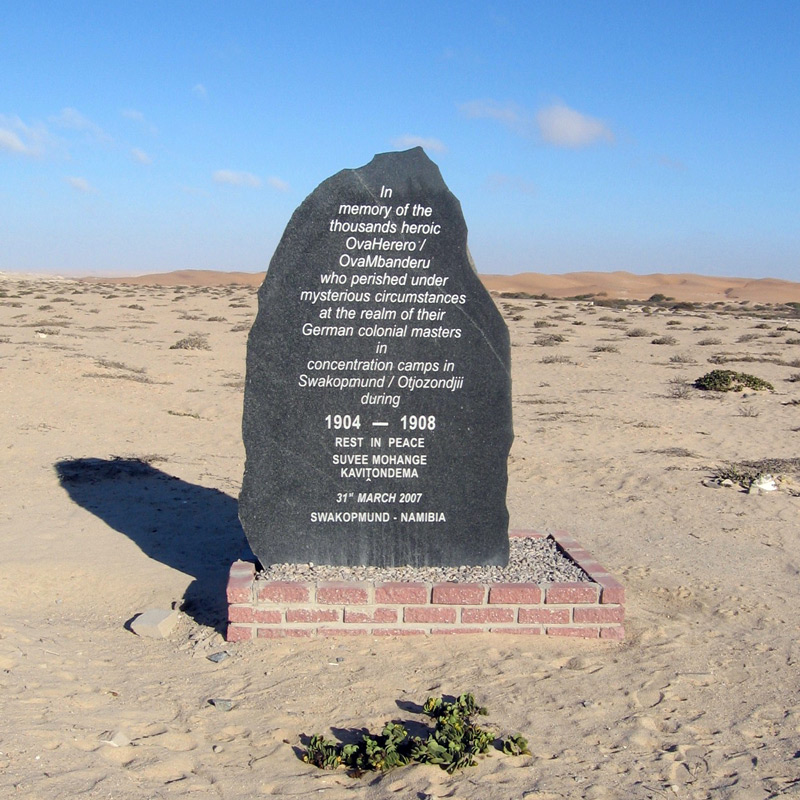
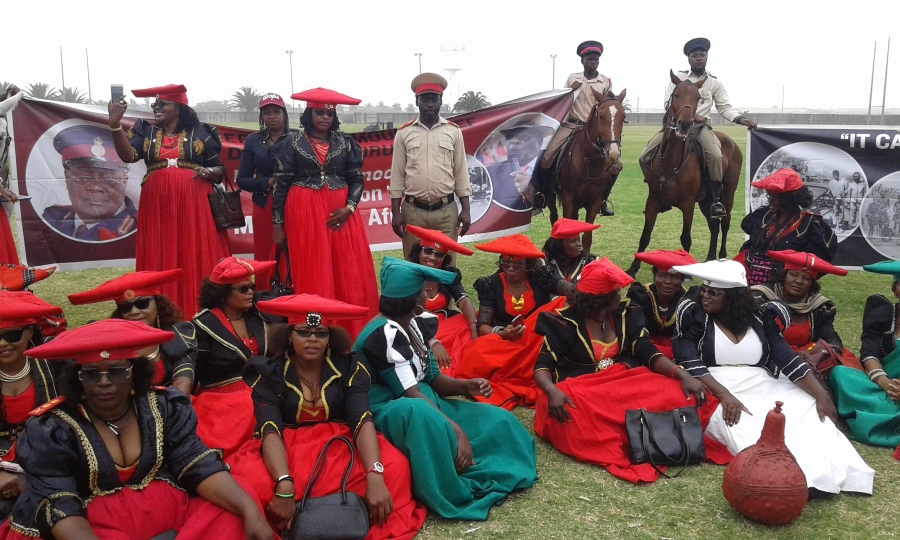
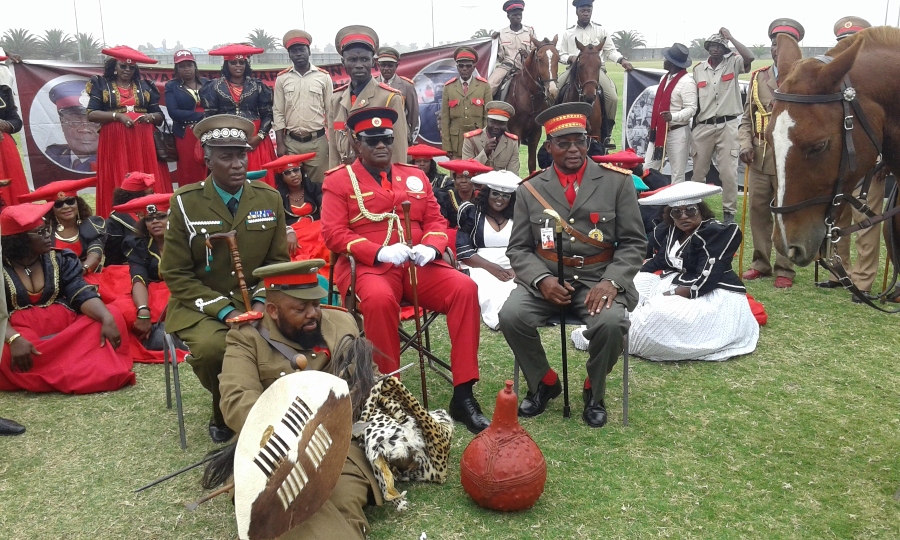
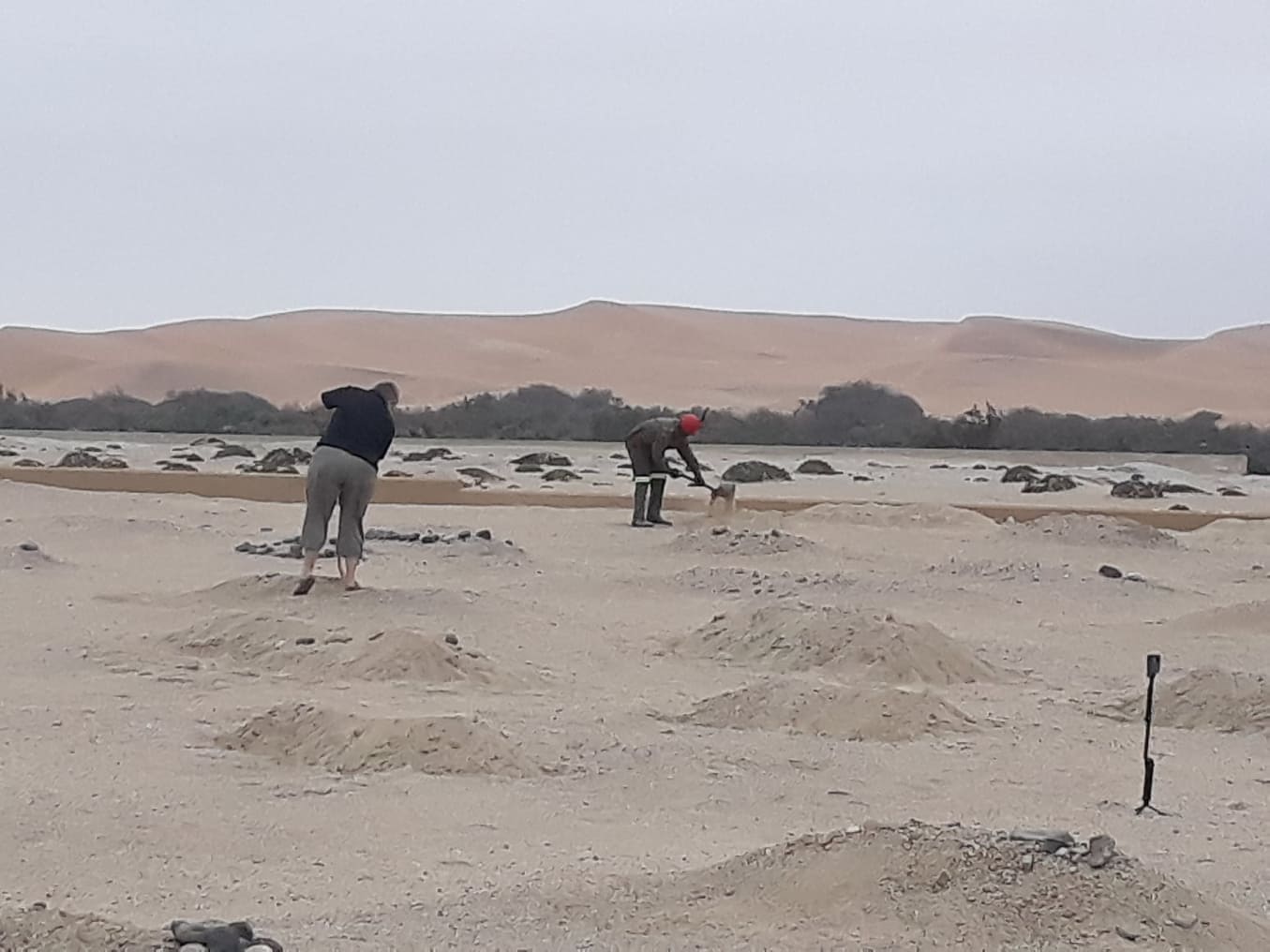
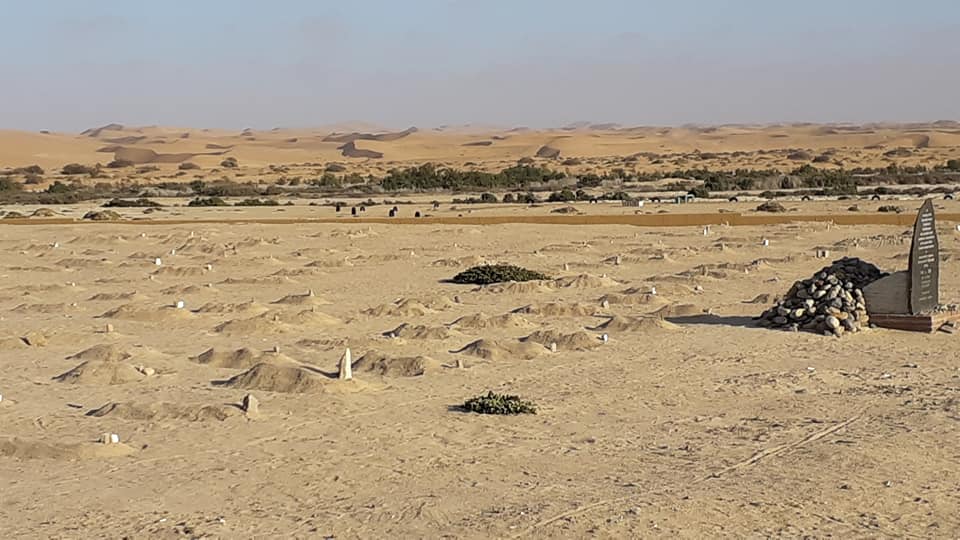
Organization in Charge - Main Referent
Ovaherero/Ovabanderu Genocide Foundation (OGF)
Nama Genocide Technical Committee (NGTC)
